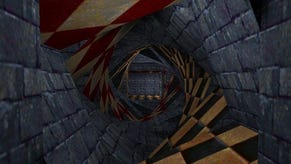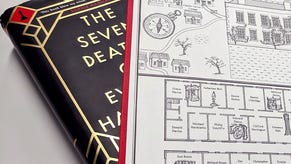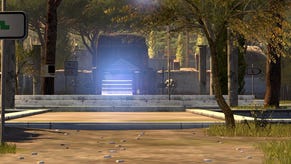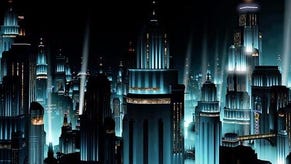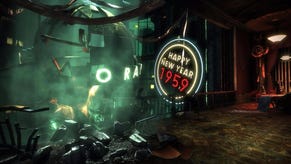BioShock 2
Put a shock in it.
Andrew Ryan, the Citizen Kane of the seabed, forever railing against conformity, against predictability, against the things that hold men back from greatness: what would he think about sequels?
Actually, who cares? For the moment, it's just good to be home again. It's good to hear the echo and churn of Rapture's creaking rafters one more, and it's a thrill to have discovered a bit more of Ryan's glitzy, waterlogged underworld to mess about in. A chance to play through the first few hours of 2K Marin's BioShock follow-up reveals the city's new custodians are pretty pleased with things, too. They certainly waste little time in thrusting you back into that rumbling, corroded temple of the depraved and pitting its fallen population against you.
It's almost impossible to mention BioShock without turning your mind back to the original game's opening moments, remembering how jarring and how terrifying it was to be dumped into all that black water, surrounded by jagged walls of flame, while the tail of a passenger plane sank below the waves behind you.
The opening to the sequel is equally memorable, although previews (like this one - sorry) will have inevitably lessened the impact somewhat. Once again, water ripples and light flickers. Slowly, an image stabilises, and it's you - the hero? - peering into a murky puddle as your own reflection stares right back, all hulking shoulders and shiny brass face-plate with its thick, foggy glass.

You're a Big Daddy (the first one ever, brought back to Rapture for reasons as yet rather mysterious) and as you start to move, you feel the plodding heft of a Big Daddy in every step. Look around and you're likely to see the rim of your headgear obscuring the outer edges of your vision. Stand and your drill arm snaps into view at the bottom right of the screen. Take a few steps, and listen: You're back in Rapture in its groaning, dripping, flickering glory. Much has changed, and so, most importantly, have you.
Time has passed, and Ryan's paradise has spiralled even further into chaos. Any surviving Splicers are now grotesque mottled freaks, all split lips and blistered skin. Elsewhere, the city's constant architectural grumbling seems a little more insistent, and dereliction has dappled the walls of its palaces, theme parks, and railway stations with sea urchins and glowing coral, while aging speakers spurt wobbling chunks of old dance-hall music at you. You're never far from something that's sputtering, sparking or unevenly chugging down here, and figures hide in every shadow, ready to finish you off with spanner or tommy gun.
At least that last bit should be familiar. For the first few hours of the game, the biggest change, other than the general deterioration of the environment, is the drill where your right hand should be. Good. Combat was arguably the aspect of the original BioShock most in need of tweaking.
The blend of plasmids and firearms proved endlessly fascinating for those willing to really put in the effort, but for lazybones like me, it was too easy to ignore the game's regular promptings to sound out the environment for devious bottlenecks built for ambushes, and settle instead for a repetitive slog through lumbering enemies, sluggish weapons, and endless sentry turrets. If you weren't careful, combat could eventually become nothing more than the busywork price you paid to unlock the next bit of story, or the latest stylish chunk of art design.



